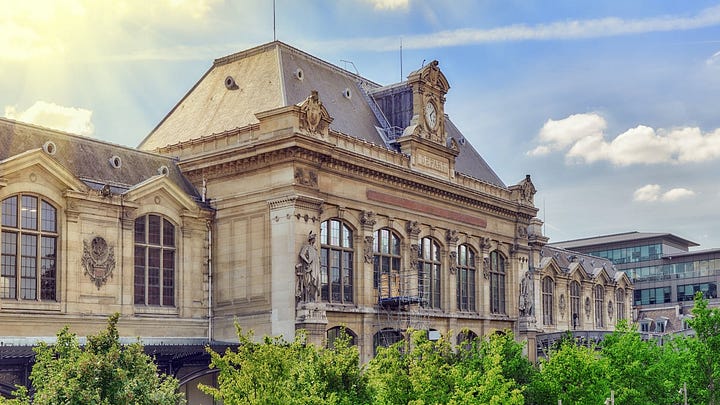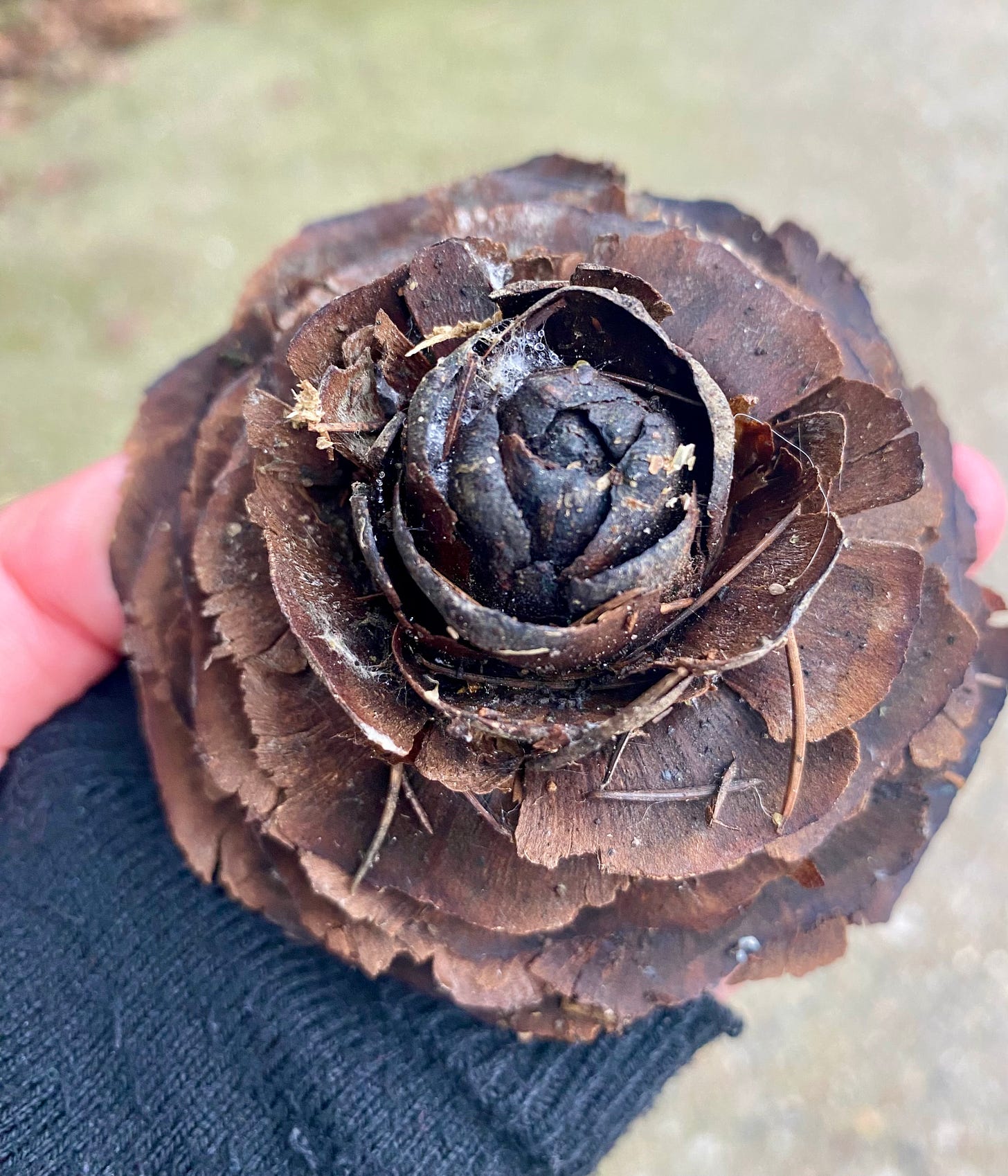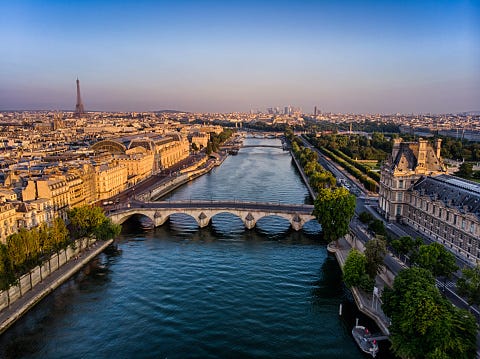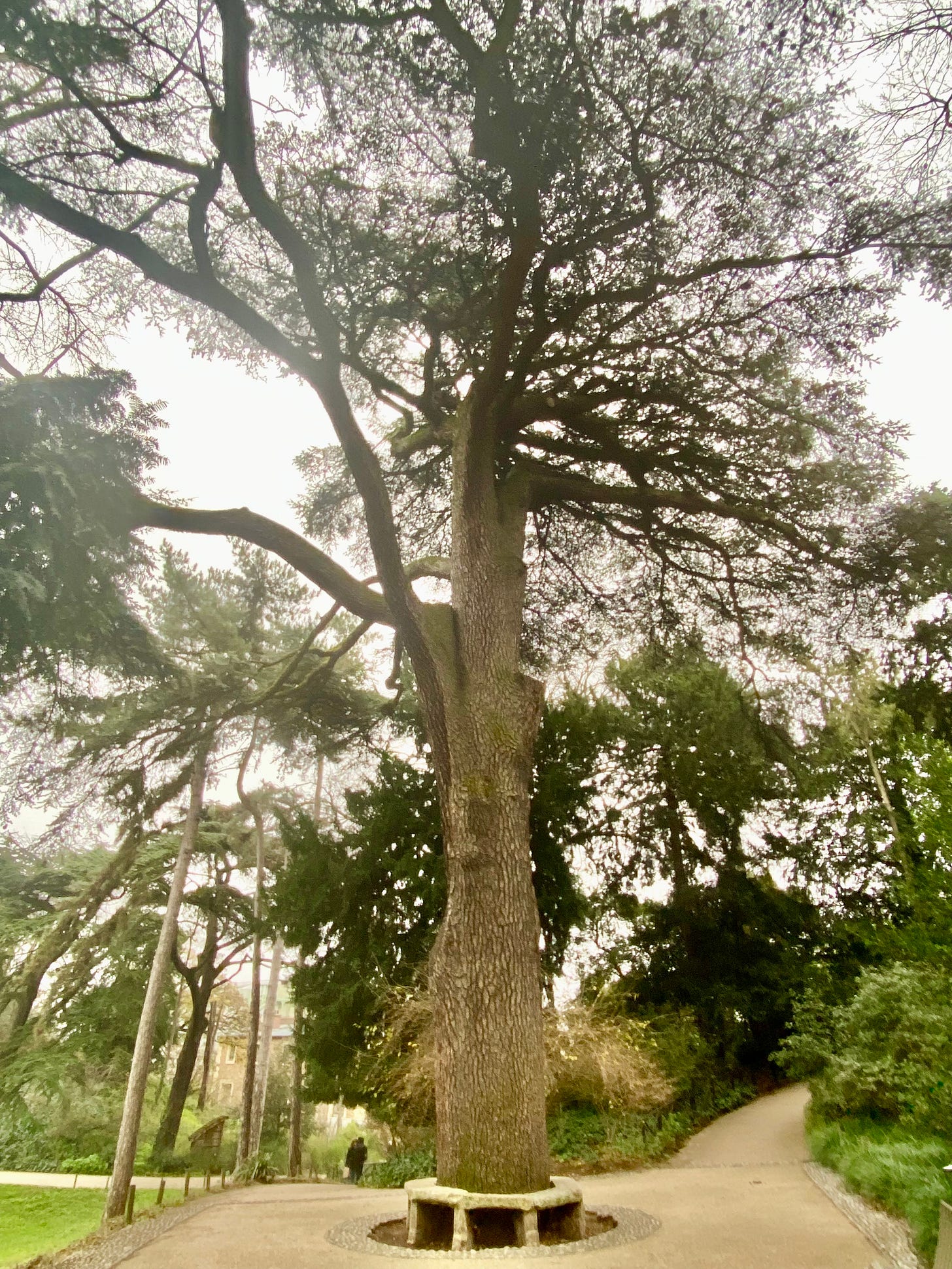I wrote about Jardin des Plantes (as a part of my self appointed artist in residence of unusual Parisian gardens) about a month and a half ago- before a much needed self-assessment break.
You can read about it here:
Paris seen by a crow
My unofficial artist residence of the unusual Parisian gardens ( thank you, again, Amy Stewart for the idea) continues. Of course winter might not be an ideal time for visiting gardens, but I find them a particular beauty. Still there was a rather long cold spell here and while I find sunlit cold days quite enjoyable- I’ve spent some time reading ( a very appropri…
At the time I felt like writing on Substack has become too much, an added weight to what is a period of big changes in my life. But somehow writing has found its way back to me (or me to it) and here I’m today with a second part of that piece on Jardin des Plantes.
You might also have noticed that I’ve changed the name of my Substack that, it seems to me, better reflects its content.
The last bit of the “housekeeping” news is that I’m opening payed subscriptions- even though all of my content stays free and accessible to everyone. If you’re so inclined and in the capacity to do it, I would be most grateful for your support.
I’ve noticed that I’ve referred to Jardin des Plantes ( The Botanical Garden) and to the Musée National de l’Histoire Naturelle (Museum of Natural History) without distinction in the first installment of this essay and that might have created some confusion. In order to clear, hopefully, things up here is some history. In 1636 the Royal Garden of Medicinal Plants (Jardin royal des plantes médicinales soon shorted to Jardin des Plantes) was created on the orders of Louis XIII. It wasn’t only a garden but a also a school where botany- chemistry and anatomy were taught in French (and not in Latin as was common at the time) and the classes were open to everyone. Needless to say, the clergy wasn’t happy.
The Jardin des Plantes continued its mission of research and education all through the XVIIIth century and in 1793, the Revolutionary government attributed a different status to it, naming it the Museum of Natural History. So today the term Jardin de Plantes refers more to the public garden itself whereas the Museum of Natural History includes most of the buildings in the garden, such as the Gallery of Evolution, the zoo and the hot houses.
As you can see on the map above Jardin des Plantes is situated next to two railway stations: Gare de Lyon with its elegant watch tower and the stone facade of Gare d’Austerlitz. A large bridge spans the Seine connecting the two stations. That bridge is alive with a constant hum from the rolling suitcases’ wheels. Travellers walking to and fro in a constant, fluid movement. The garden offers a lovely respite for those who wish to spend their time while waiting for their train outside and eat their breakfast or lunch under the plane trees.


But the train isn’t the only mode of transportation. The Seine that slowly flows right by the Garden still carries barges and houseboats. If you’ve watched the opening ceremony of 2024 Olympics you might remember the Seine becoming the main walkway for the sports teams from all over the world. But long before that many of the scientists who have worked in the Museum of Natural History and have contributed to its collections have travelled extensively- embarking on the Seine to commence their journeys.
I imagine these academics in long robes, ceremoniously descending the steps from the Museum to a long and narrow boat waiting for them on them river. One has a microscope under the arm, another a drawing board, a third maybe some empty containers for the plant specimens yet to be collected. Behind the stately professors their assistants are dragging heavy suitcases. The procession enters the boat and sits down ready to embark on a long voyage.
A few months later, the boat docks back and the passengers disembark in the same stately manner. Their hair and beards are longer, with maybe a few plants and lichens attached and the robes are worse for wear. Each one carries gingerly a particularly precious plant or rock or maybe a cage with a colourful bird inside. The assistants behind- somewhat more bedraggled- carry a profusion of various specimen, almost cowering under the weight.
My poetic licence aside the majority of the trees in the Jardin des Plantes has been brought in by the scientists who were looking to expand the collection. Often paying for their long distance expeditions with their own money and bringing back specimens of plants, animals and minerals in order to advance their knowledge.
Almost every tree in the garden has a story to tell. Maybe not all of them as entertaining as the one about the Lebanese cedar, brought in 1734 by a clumsy French botanist Bernard Jussieu. According to the legend, Jussieu has broken the pot in which he was transporting the seedling and had to carry the latter in his hat.
Now the cedar towers over most of the trees in the garden, calm and majestic. It’s bark a particular silvery colour, soft under the touch.
There is beauty in the gardens in the period that is coming up right now as well. The ground is wet and brown, there is a lot of mud and visually it’s not …pretty. But one feels life pulsating, the beginning of spring is rough and deep. In a couple of weeks when the sun will get warmer everything will speed up. I can already see myself feverishly trying to write about the cherry blossoms and the peonies and the bluebells, running from one garden to another, taking pictures and trying to arrive before the petals cover the ground.
For now, the change is less spectacular but profound. Nature is taking care of its own creating the most nourishing atmosphere for the plants to flourish on later. There isn’t that much to look at and the atmosphere isn’t very appealing: the mud, the bare branches with just a hint of the first buds, the sudden gusts of piercingly cold wind. Kind of like the behind the scenes of the first months of having a baby. All the glorious poop, and burping and milk everywhere- not so glamorous. Yet, probably more true in reflecting your raw and fierce and primal love for your baby, than the staged newborn photos.
But one sign of spring you can’t miss are those fluffy bright yellow balls of mimosas. They seem to be screaming on top of their lungs- notice me, I’m here to tell you something! The bright and yellow flowers announce the coming of sunshine and warmth and there is no stopping them.
On a side note (I love side notes!) I used to think that these were very hard to grow, probably influenced by the prices of their bunches in the shops. It was after a trip to the South of France in February’ a few years ago, where I saw the mimosa trees- bright splashes of colour against the vivid blue of the sky- growing on the most unhospitable rocks, that I’ve realised that these trees just grew wildly everywhere. Every year I resist buying the branches at the florist’s not so much because I realise how overpriced they are but because they can’t seem to last more than 24 hours in a vase. Maybe these wild flowers aren’t meant to decorate our apartments after all but to flow freely in the February and March winds. I love looking at them though- the perfect roundness of the blooms and the exquisite cut of the leaves and smelling their perfume of course.
I suppose that big cities, like Paris, can be seen as cold- places that smash the individual, make her or him small, non existent. Often we read of people who leave the industrial city with its negation of the individual to find comfort and peace in the countryside.
However, I’d like to argue that, as the title of Jon Kabat-Zinn’s well known book indicates, Wherever you go, there you are, meaning that you bring your internal turmoil with you even in the most bucolic of settings. You are responsible for creating your own universe of calm wherever you happen to be. You could have a calm and peaceful space in a tall apartment building in the middle of a busy city or an anxiety inducing cold and uncomfortable place in the most quaint of villages by the sea.
That said, without any particular effort on my part, « my » Paris is a city that heals. When I’m walking its streets, stopping in its gardens, exploring the museums I feel like the tension evaporates from me and the inner cuts and wounds start to close up. Maybe it’s the light and the way it reflects on the stone walls of the buildings, the constant presence of the river that breathes on its own rhythm, the trees whose the bark creates a beautiful mosaic of colours and textures... Maybe the soft curves of the Seine do feel like mothering arms both comforting and allowing for travel. Because I suppose that this is what mothers do we hold close and then we let go which is both the hardest, the most painful and also the most joyful of experiences.
I hope that you’ve enjoyed this somewhat rambling reflection on gardens, Paris, travelling and motherhood. Please, don’t hesitate to leave a comment, they always make me happy or a “heart” that allows more people to discover these walks.












I love that you've come back with a new name and opened up for paying subscribers. All good news. And I hope you'll spend as much time here as you feel is right for you just now, Dacha.
Lovely to read about this garden. You've planted a strong image in my mind of suitcases being wheeled along between the two stations amidst lots of green space.